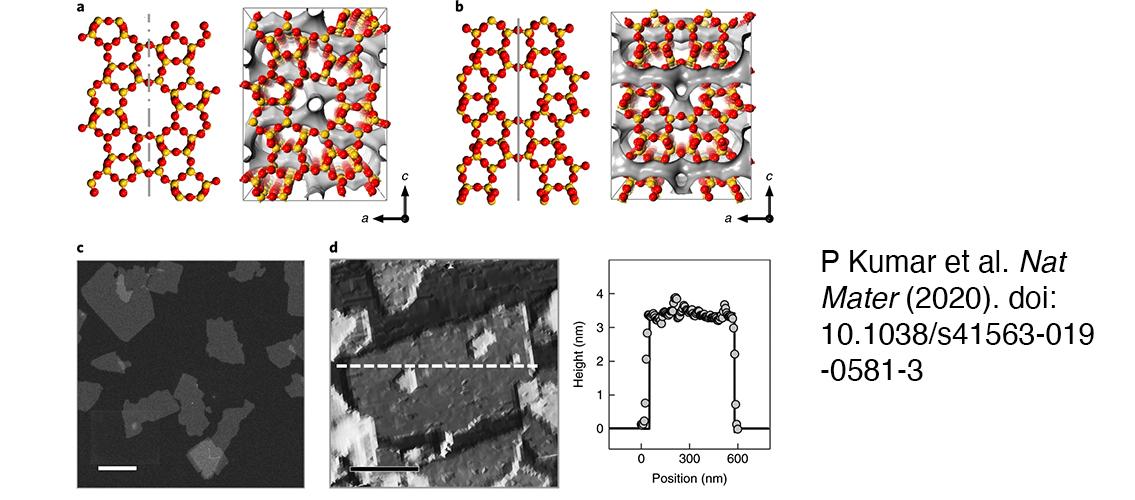
Zeolites are a class of materials that are used by industry as adsorbents and catalysts. Very thin zeolite films - nanofilms - can be used as molecular filters. Researchers are working to develop new, more effective nanofilms that will improve industrial processes.
Several MSI PIs and researchers are co-authors on a recent paper that describes the discovery of one-dimensional defects in a two-dimensional structure of zeolite MFI, which is a catalyst and adsorbent with promise for use as a thin-film membrane. This discovery, published recently in the journal Nature Materials, used a technology called transmission electron microscopy (TEM) to discover intergrowths of a zeolite called MEL that exist within 2D-MFI. These MEL intergrowths appear to cause the MFI nanosheets to have more-selective pores; this discovery could allow researchers to create ultra-selective molecular filters.
The article can be found on the journal website: P Kumar, DW Kim, N Rangnekar, H Xu, EO Fetisov, S Ghosh, H Zhang, Q Xiao, M Shete, JI Siepmann, T Dumitrica, B McCool, M Tsapatsis, KA Mkoyan. One-dimensional intergrowths in two-dimensional zeolite nanosheets and their effect on ultra-selective transport. Nature Materials (2020). doi: 10.1038/s41563-019-0581-3.
MSI PIs who participated in this research are:
- K. Andre Mkhoyan (associate professor, Chemical Engineering and Materials Science)
- Professor Mkhoyan uses MSI for simulations that complement experiments in order to provide new insights into the atomic and electronic structures in a variety of technologically important materials.
- The lead author of the paper, graduate student Prashant Kumar, uses MSI as part of Professor Mkhoyan’s research group.
- Traian Dumitrica (professor, Mechanical Engineering)
- Professor Dumitrica uses MSI for far-reaching research that will enable new concepts for protective coatings and the development of a new multiscale tool to predict materials' response.
- Co-author Hao Xu is a member of the Dumitrica MSI group.
- J. Ilja Siepmann (professor, Chemistry)
- Professor Siepmann’s group develops computational chemistry tools for a number of projects that investigate phase, sorption, and chemical equilibria behavior, and self-aggregation behavior and partitioning in polar and non-polar bulk fluids and in heterogeneous and interfacial systems.
- Co-author Evgenii Fetisov is a member of the Siepmann MSI group.
- Another co-author, Professor Emeritus Michael Tsapatsis, is a former MSI PI currently at Johns Hopkins.
An article about this research can be found on the College of Science and Engineering website: Atomic-scale imaging reveals secret to thin film strength.
Image description: Structure of the nanosheet. a,b: Atomic structure (left) and the resulting porous network shown in gray (right) for MFI (a) and MEL (b), viewed along the b direction, which are formed by connecting pentasil chains through inversion symmetry (dashed gray line) and mirror symmetry (solid gray line), respectively. c. ADF-STEM image of the MFI nanosheets. d. AFM image of an MFI nanosheet. A line scane (dotted white line) across the nanosheet is shown in the right panel. The average measured thickness of the nanosheet along the b direction is 3.2 nm. Image and description from P Kumar et al. Nat Mater (2020). doi: 10.1038/s41563-019-0581-3.
posted on April 22, 2020